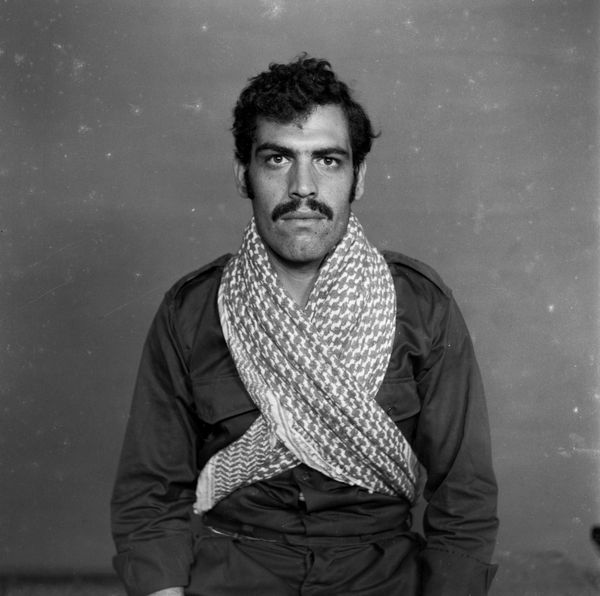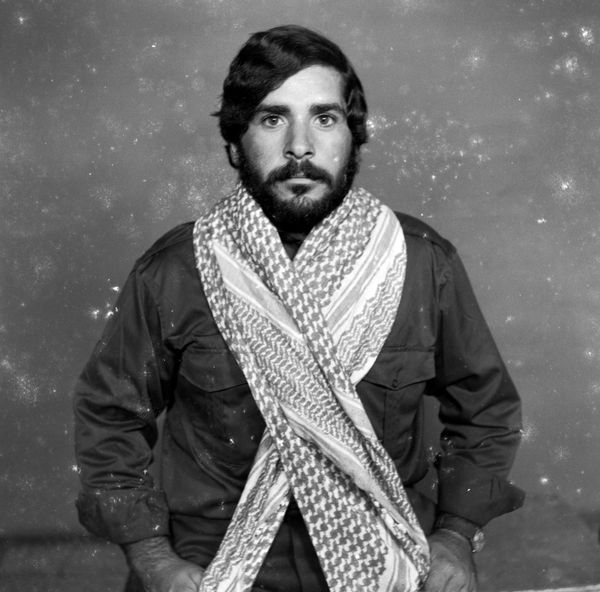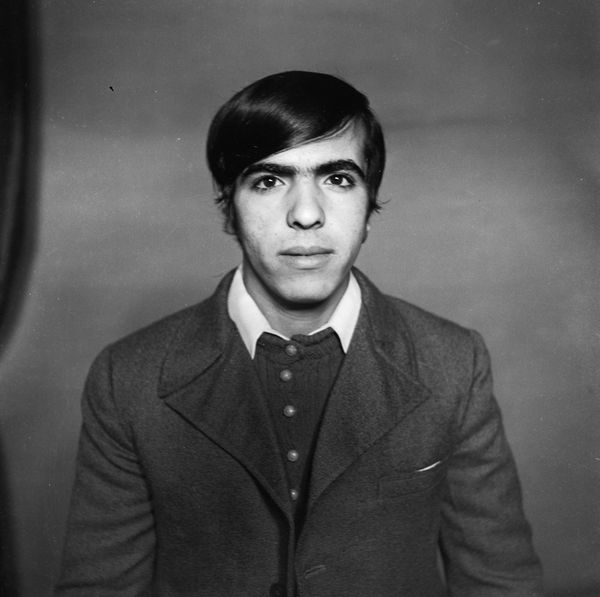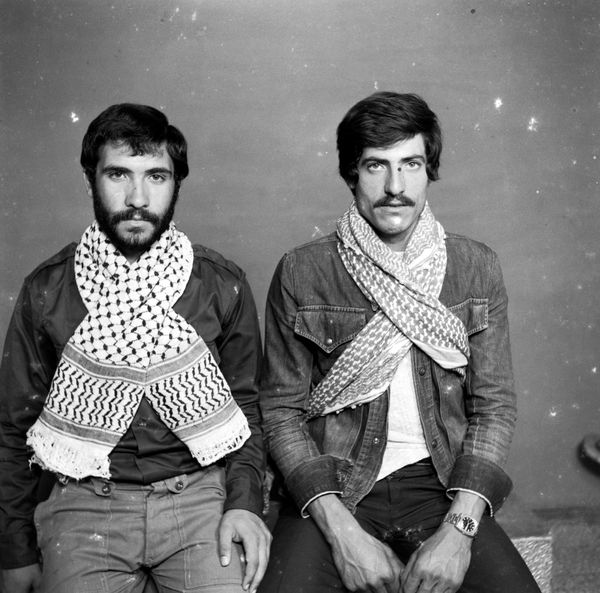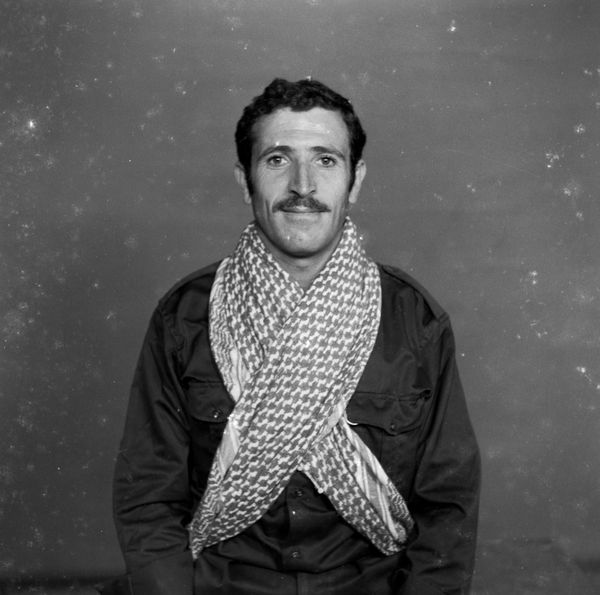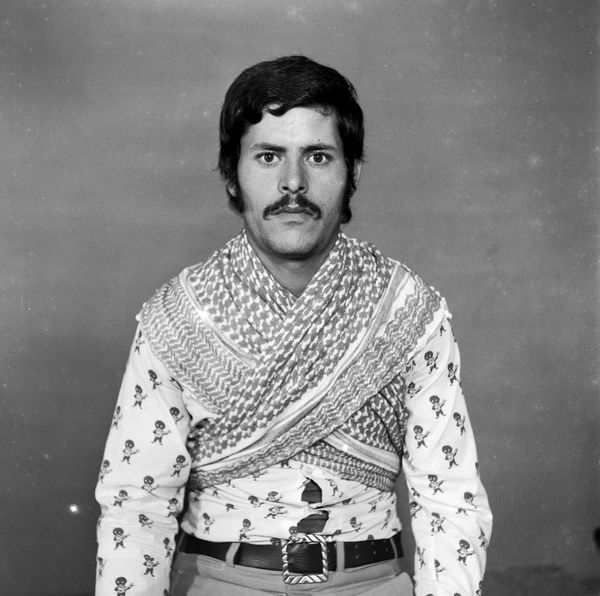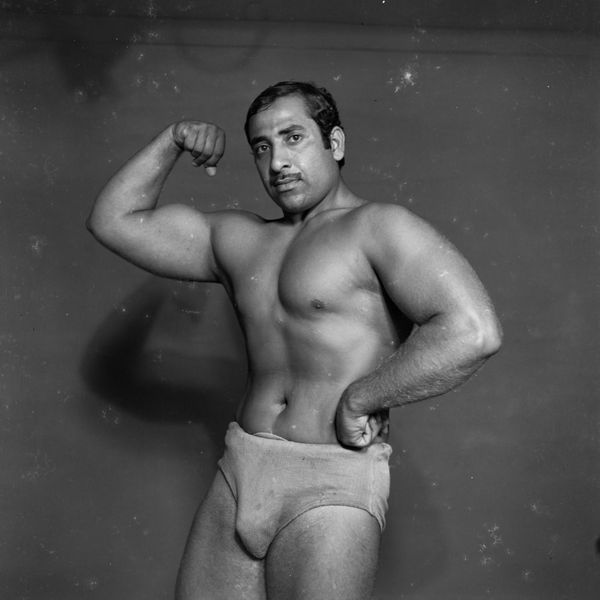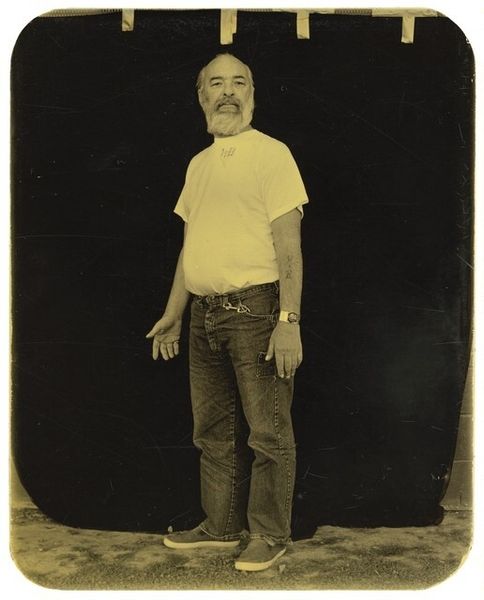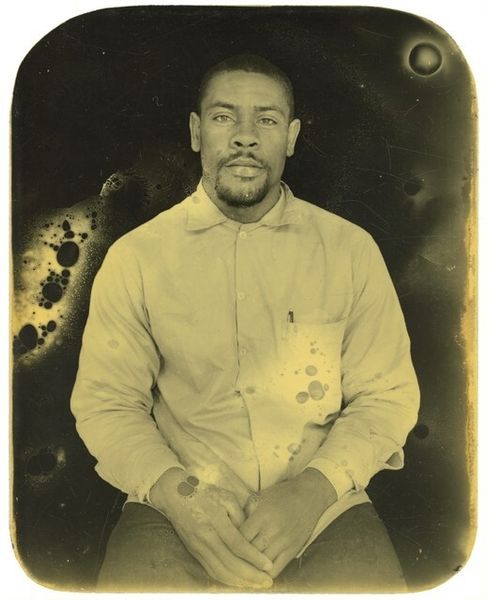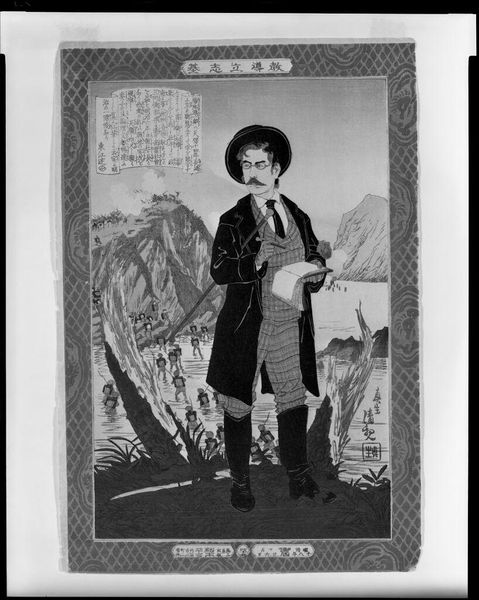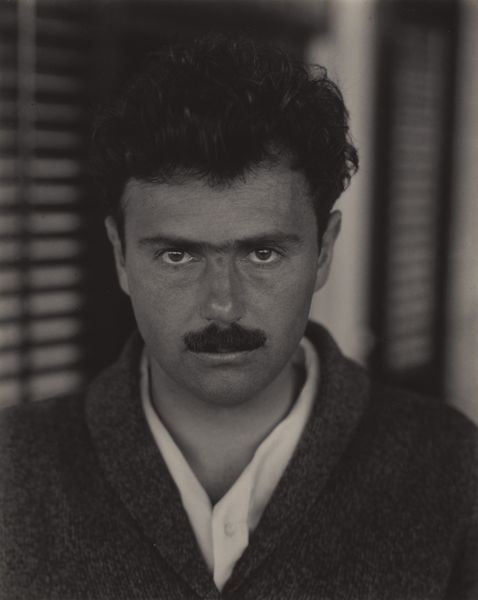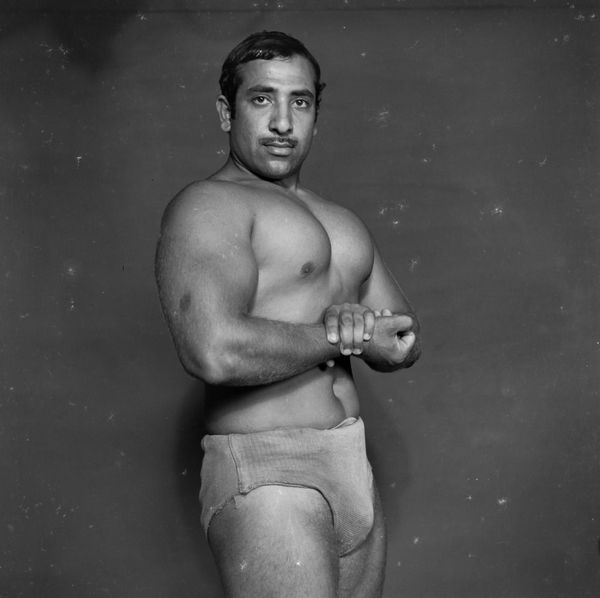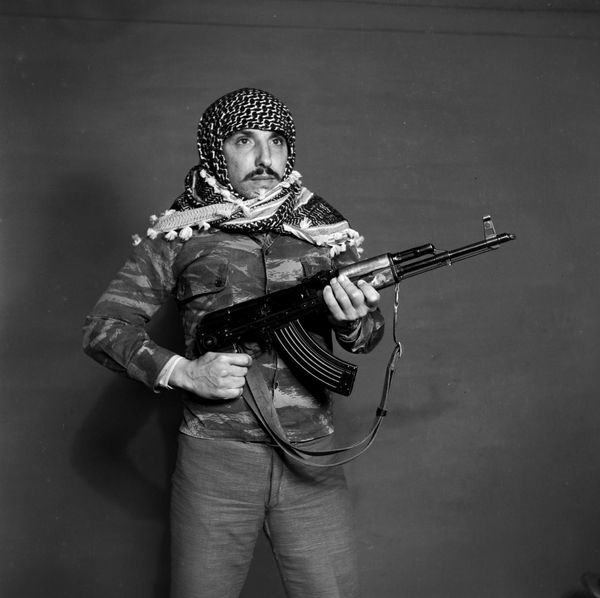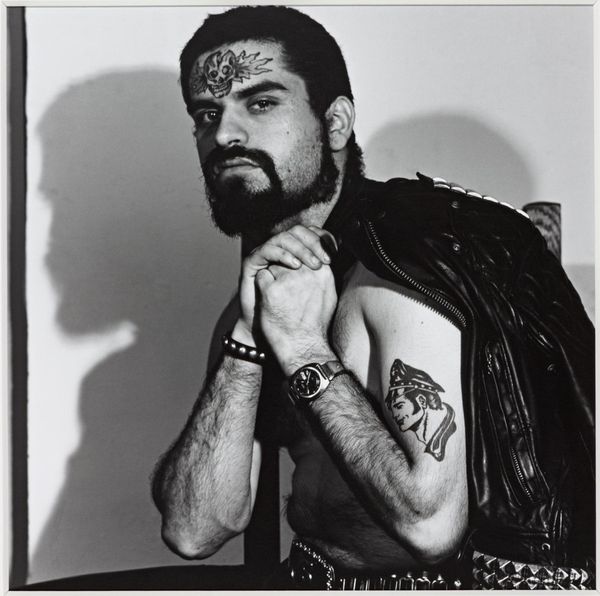
Syrian resistant. Studio Shehrazade, Saida, Lebanon, early 1970s. Hashem el Madani 2007
0:00
0:00
Dimensions: image: 291 x 292 mm
Copyright: © Akram Zaatari, courtesy Hashem el Madani and Arab Image Foundation, Beirut | CC-BY-NC-ND 4.0 DEED, Photo: Tate
Curator: This arresting image, "Syrian resistant. Studio Shehrazade, Saida, Lebanon, early 1970s. Hashem el Madani," is by Akram Zaatari. It speaks volumes, even without knowing the specific date. Editor: It's striking. The direct gaze and the keffiyeh immediately signal resistance, but there's also a vulnerability present. The photo studio backdrop contrasts sharply with the subject's implied role. Curator: Precisely. Zaatari's work often excavates the layers of identity and representation. The studio portrait, a seemingly simple format, becomes a site of political assertion and self-fashioning. It raises questions about the construction of identity in times of conflict. Editor: The keffiyeh is an iconic symbol, loaded with history. How does Zaatari's approach to this portrait challenge or reinforce those established meanings within the political landscape of Lebanon at that time? Curator: It invites us to consider the individual within the collective struggle. The sitter isn't just a symbol, but a person actively constructing his identity in relation to the ongoing conflicts. Editor: It's a powerful testament to the intersection of personal identity and political struggle. Curator: Indeed. A poignant reminder that resistance is embodied, personal, and always unfolding.
Comments
tate 6 months ago
⋮
http://www.tate.org.uk/art/artworks/zaatari-syrian-resistant-studio-shehrazade-saida-lebanon-early-1970s-hashem-el-madani-p79401
Join the conversation
Join millions of artists and users on Artera today and experience the ultimate creative platform.
tate 6 months ago
⋮
This work is one of a series of black and white silver gelatin photographs of varying sizes that are collectively titled Objects of study/The archive of studio Shehrazade/Hashem el Madani/Studio Practices. All of the photographs were taken by the Lebanese commercial photographer Hashem el Madani between 1948 and 1982 and compiled into the present group, 117 of which are in Tate’s collection, by the Lebanese artist Akram Zaatari. All of the photographs include people, either alone, in pairs or in small groups, and most were taken in Madani’s studio, although some were shot outside and in his subjects’ homes. The series features men and women and covers a wide age range from babies to elderly people. Almost all of the sitters assume poses deliberately for the camera, sometimes accompanied by props or costumes, and most gaze directly towards the lens. Many of the pictures show subjects interacting in various ways, including embracing, kissing and acting out scenes, such as a mock wrestling match. The photographs are mostly tightly cropped, with the sitter or sitters filling most of the frame, although in some cases the figures are positioned further away from the camera, for instance when shown sitting at a table or standing behind a chair. The photographs tend to have sparse backgrounds, often dominated by a blank posterior wall. They are mounted on white paper, displayed in plain white frames and signed on the back by Madani. Many of them have been organised into categories by Zaatari – such as a group featuring men dressed as Syrian resistance fighters and a collection depicting newly married couples – while the rest are presented individually. Zaatari has stated that although he prefers these groups to be displayed together, this is not a requirement (Akram Zaatari, email to Rachel Taylor, 24 April 2008, Tate Acquisition file).
